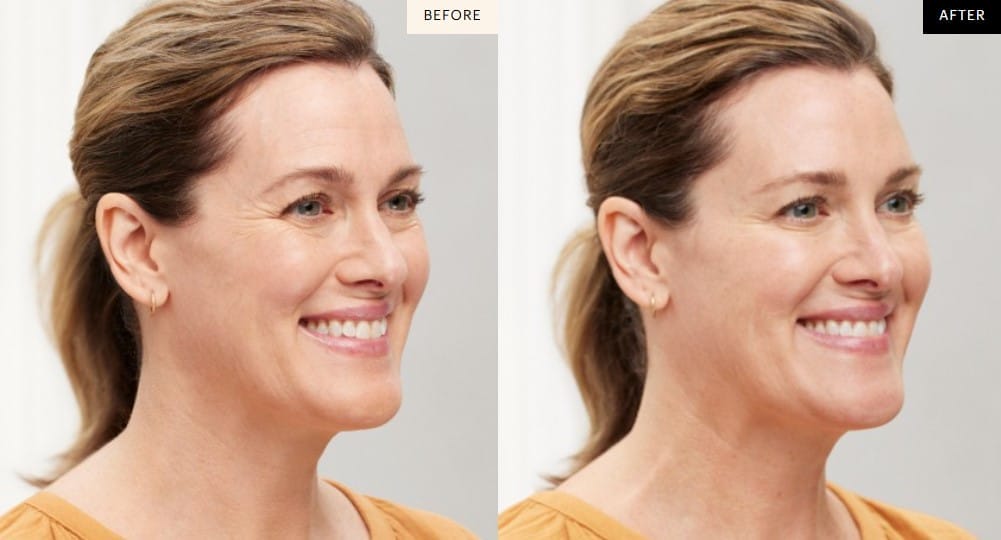Welcome to Thomassen Plastic Surgery, where we offer expert Botox treatments in Fort Lauderdale to help you look and feel your best. Led by board-certified plastic surgeon Dr. John Thomassen, our clinic specializes in non-surgical facial rejuvenation using FDA-approved Botox Cosmetic.
What is Botulinum Toxin (Botox)?
Botox is a purified neurotoxin that temporarily relaxes facial muscles responsible for expression lines. It’s one of the most popular cosmetic procedures in the U.S., with millions of treatments performed each year. Botox smooths fine lines and wrinkles for a refreshed, natural appearance.
Commonly known types of botulinum toxin type A injections include BotoxCosmetic, Dysport, and Xeomin. The bacterium Clostridium botulinum produces the neurotoxin botulinum toxin.
Mechanism of Botulinum Toxin
Muscles contract when motor nerves release the neurotransmitter acetylcholine. The nerve releases this neurotransmitter at the interface of the nerve and the muscle fiber. The acetylcholine attaches to the muscle cells’ receptors, causing the muscle cells to contract.
Botulinum toxin injected into specific muscles, prevents the release of the chemical messenger acetylcholine from the motor nerve. These muscles then can’t contract.
Why get Botulinum Toxin Treatment?
With our warm, coastal climate and vibrant lifestyle, Fort Lauderdale residents value looking their best with minimal downtime. Botox offers a quick, effective solution to soften:
- Frown lines between the brows
- Forehead wrinkles
- Crow’s feet around the eyes
- Bunny lines on the nose
- Vertical lip lines
Dr. Thomassen combines precision and artistry to ensure natural-looking results tailored to your unique facial anatomy.
Treatment takes a few minutes and the results lasts for 3-4 months.
Areas Treated with Botox
Botox can be used to treat multiple areas, including:
- Glabella (“11” lines)
- Forehead
- Outer eye area
- Nasal bridge
- Chin dimpling
- Jawline slimming (masseter reduction)
We also offer Botox for hyperhidrosis (excessive sweating of the underarms, palms, or soles).
You need to go to an experienced injector to get the best results. For the best botulinum toxin treatment in Fort Lauderdale visit Dr. Thomassen.

Who should avoid Botulinum toxin injections?
Women who are pregnant or breastfeeding should not get botulinum toxin injections. Individuals who have a neurological disease should also avoid using botulinum toxin. People who are allergic to botulinum toxin or its components should not get this injection.
What to Expect During Your Visit
Your Botox treatment typically takes 15 to 30 minutes:
- Consultation and facial assessment
- Target area cleansing
- Precise Botox injections with a fine needle
- Post-treatment instructions
There is no downtime, and you may return to most normal activities immediately.
Details of Procedure
Anesthesia
Patients should expect to experience minor discomfort during their procedure. A topical anesthetic is placed to help make the small injections more tolerable. Cold compresses are also used to minimize sensation and bruising
Administering the Botulinum Toxin
The Botulinum toxin solution is administered to the specific muscles being treated in 0.1 mm aliquots. This leaves small little bumps on the skin that resolve in 5 minutes. During injection Dr. Thomassen avoids any superficial vessels that are injured and result in bruising.
Recovery
After Botulinum toxin injections, patients can usually resume their normal daily activities. Still, patients should avoid exercise that same day. Patients should also avoid rubbing or massaging the areas that were treated with the botulinum toxin. Rubbing or massaging these treated areas can lead to the toxin migrating from the point of injection.
The Results
Typically, patients will see the full results not right away but in 4-5 days. The results last from 3-4 months. Come see us in Fort Lauderdale for your next Botulinum toxin treatment. If you would like more information, visit the American Society of Plastic Surgery website.

Frequently Asked Questions
Q: Does Botox hurt? A: Most patients describe it as a small pinch. Topical numbing cream can be applied if needed.
Q: Can I combine Botox with other treatments? A: Yes! Botox pairs well with dermal fillers, microneedling, and chemical peels.
Q: Will I look “frozen”? A: Not at all. Dr. Thomassen uses precise dosing for natural facial expression.
Book Your Botox Appointment Today
Ready to smooth wrinkles and refresh your appearance? Contact Thomassen Plastic Surgery in Fort Lauderdale today to schedule your personalized Botox consultation.
📍 Conveniently located in the heart of Fort Lauderdale
📞 (954) 771-0200
Book an Appointment Online
Experience the confidence of younger-looking skin with Botox at Thomassen Plastic Surgery.




